Abstract
A colonial mutant of Neurospora crassa, previously shown to be altered in the structure of glucose-6-P dehydrogenase [a reduced nicotinamide adenine dinucleotide phosphate (NADPH) producing reaction], contained only 40% as much NADPH in extracts as did the wild type. A partial revertant strain, when grown at 23 C, had the same total NADPH content as the wild type, but, at 34 C, had lower levels of NADPH as well as a colonial morphology. A revertant with complete wild-type morphology had wild-type levels of NADPH. Two different colonial mutants, which have also been reported to be altered in NADPH-generating reactions, were found to have a lower content of NADPH, whereas other colonial mutants had wild-type levels. The wild-type strain, when grown under conditions in which it contained a lower total content of NADPH, had a morphology similar to that of a colonial mutant. The evidence indicates that lowered NADPH content leads to a dramatic alteration in the morphology of Neurospora, but not necessarily vice versa. The possible pleiotropic effects of the NADPH deficiency are discussed.
Full text
PDF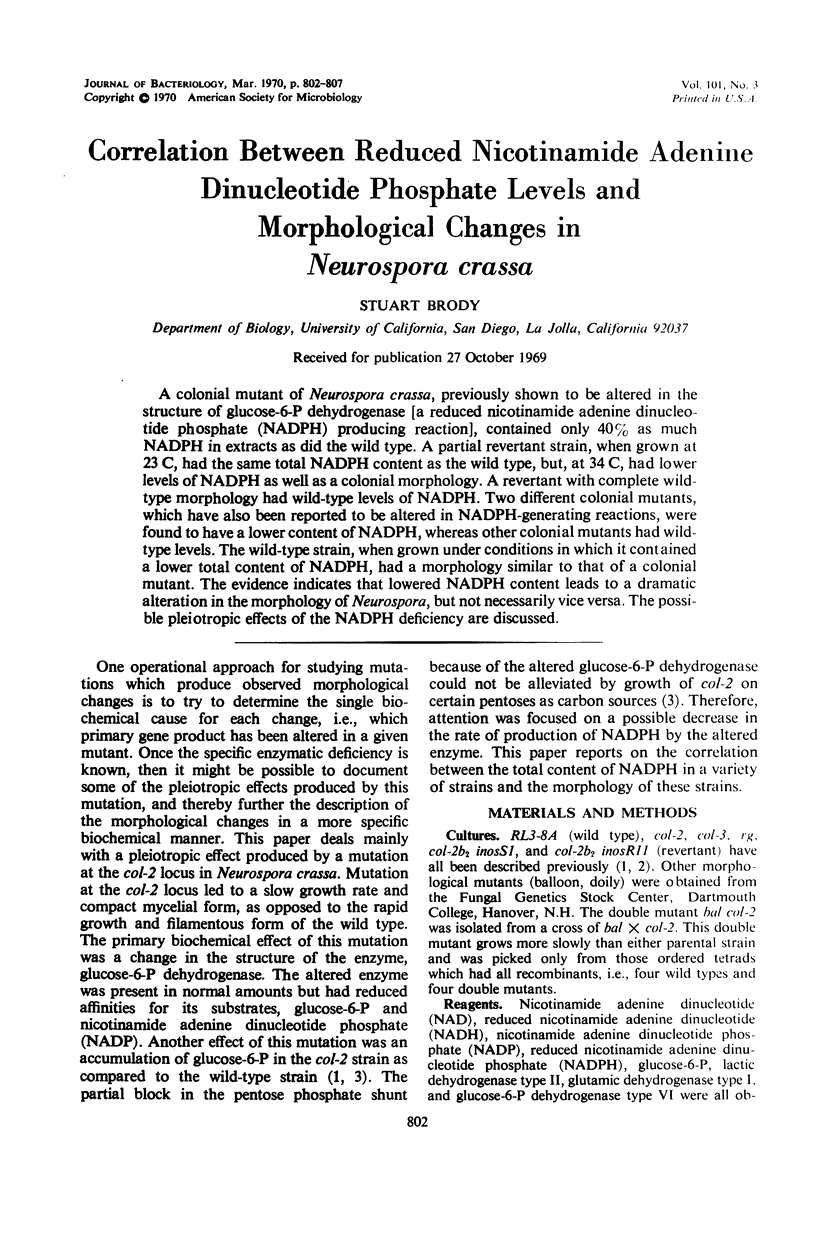
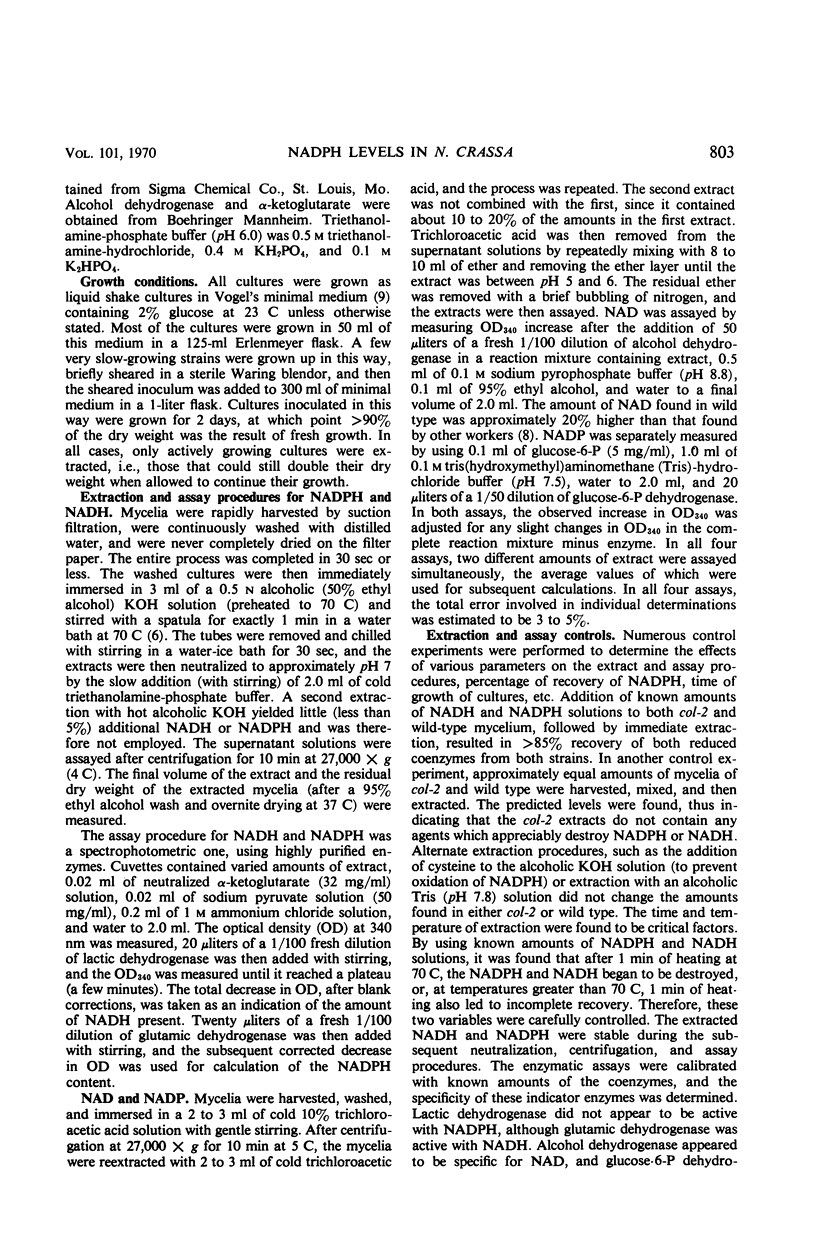
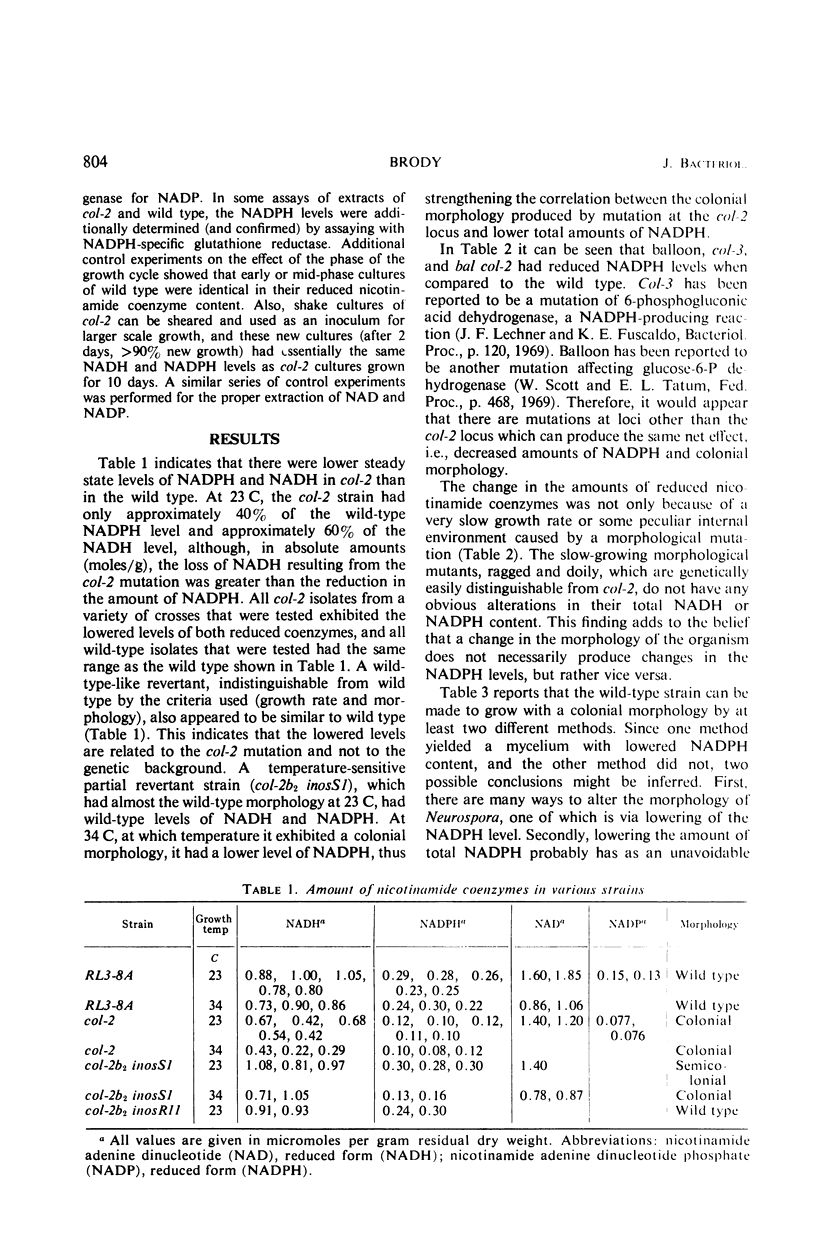
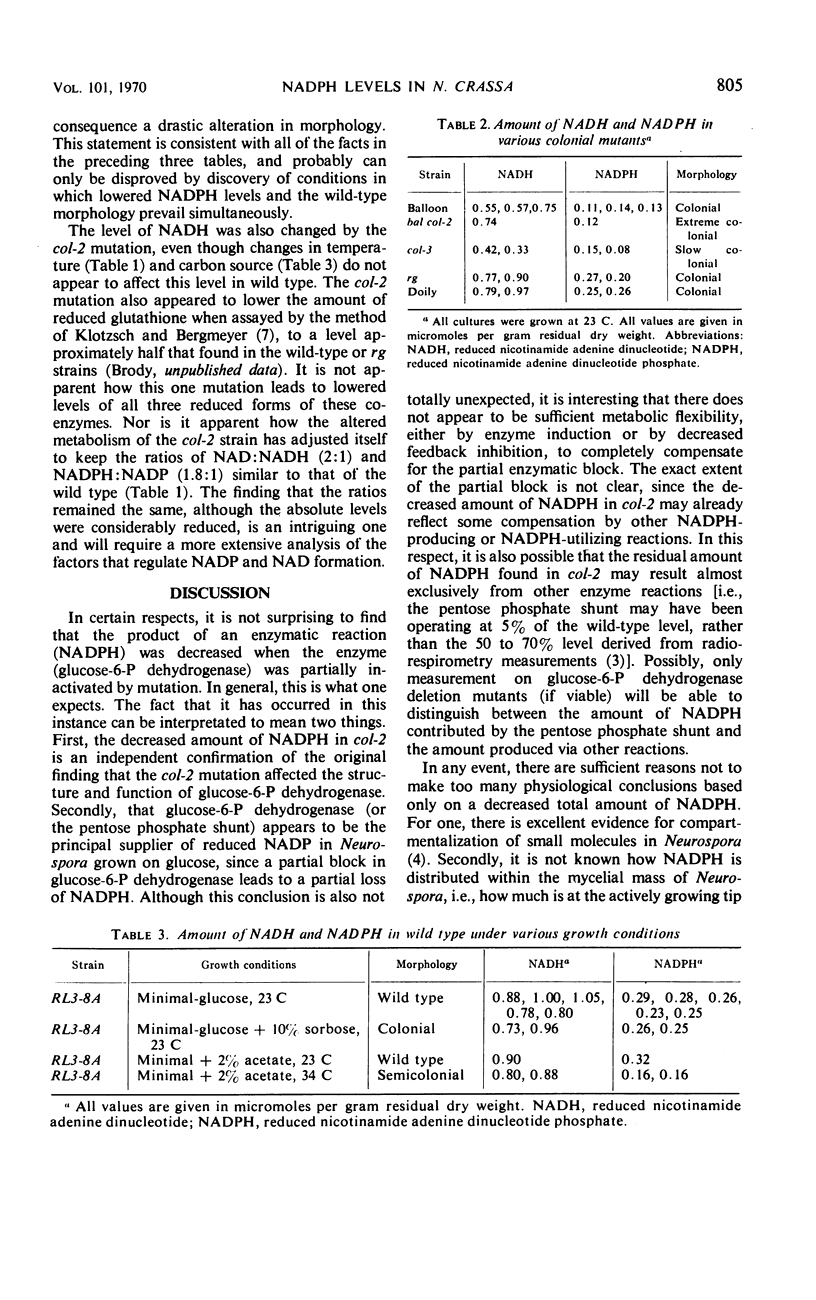
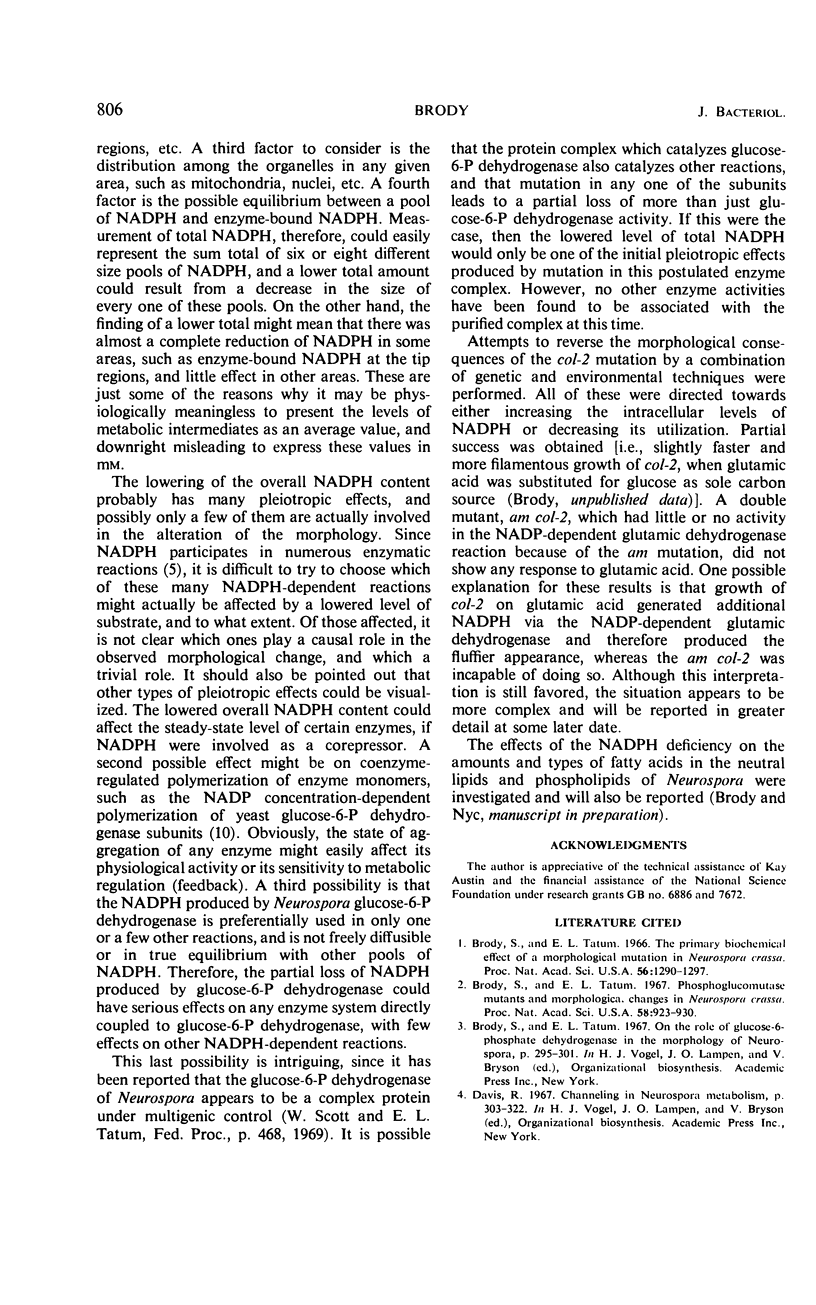

Selected References
These references are in PubMed. This may not be the complete list of references from this article.
- Brody S., Tatum E. L. Phosphoglucomutase mutants and morphological changes in neurospora crassa. Proc Natl Acad Sci U S A. 1967 Sep;58(3):923–930. doi: 10.1073/pnas.58.3.923. [DOI] [PMC free article] [PubMed] [Google Scholar]
- Brody S., Tatum E. L. The primary biochemical effect of a morphological mutation in Neurospora crassa. Proc Natl Acad Sci U S A. 1966 Oct;56(4):1290–1297. doi: 10.1073/pnas.56.4.1290. [DOI] [PMC free article] [PubMed] [Google Scholar]
- KLINGENBERG M., BUECHER T. Biological oxidations. Annu Rev Biochem. 1960;29:669–708. doi: 10.1146/annurev.bi.29.070160.003321. [DOI] [PubMed] [Google Scholar]
- SMITH E. J., WHEAT R. W. Acid-soluble nucleotide spectrum of Neurospora crassa. Arch Biochem Biophys. 1960 Feb;86:267–269. doi: 10.1016/0003-9861(60)90416-1. [DOI] [PubMed] [Google Scholar]
- Yue R. H., Noltmann E. A., Kuby S. A. Glucose 6-phosphate dehydrogenase from brewers' yeast (Zwischenferment). 3. Studies on the subunit structure and on the molecular association phenomenon induced by triphosphopyridine nucleotide. J Biol Chem. 1969 Mar 10;244(5):1353–1364. [PubMed] [Google Scholar]


